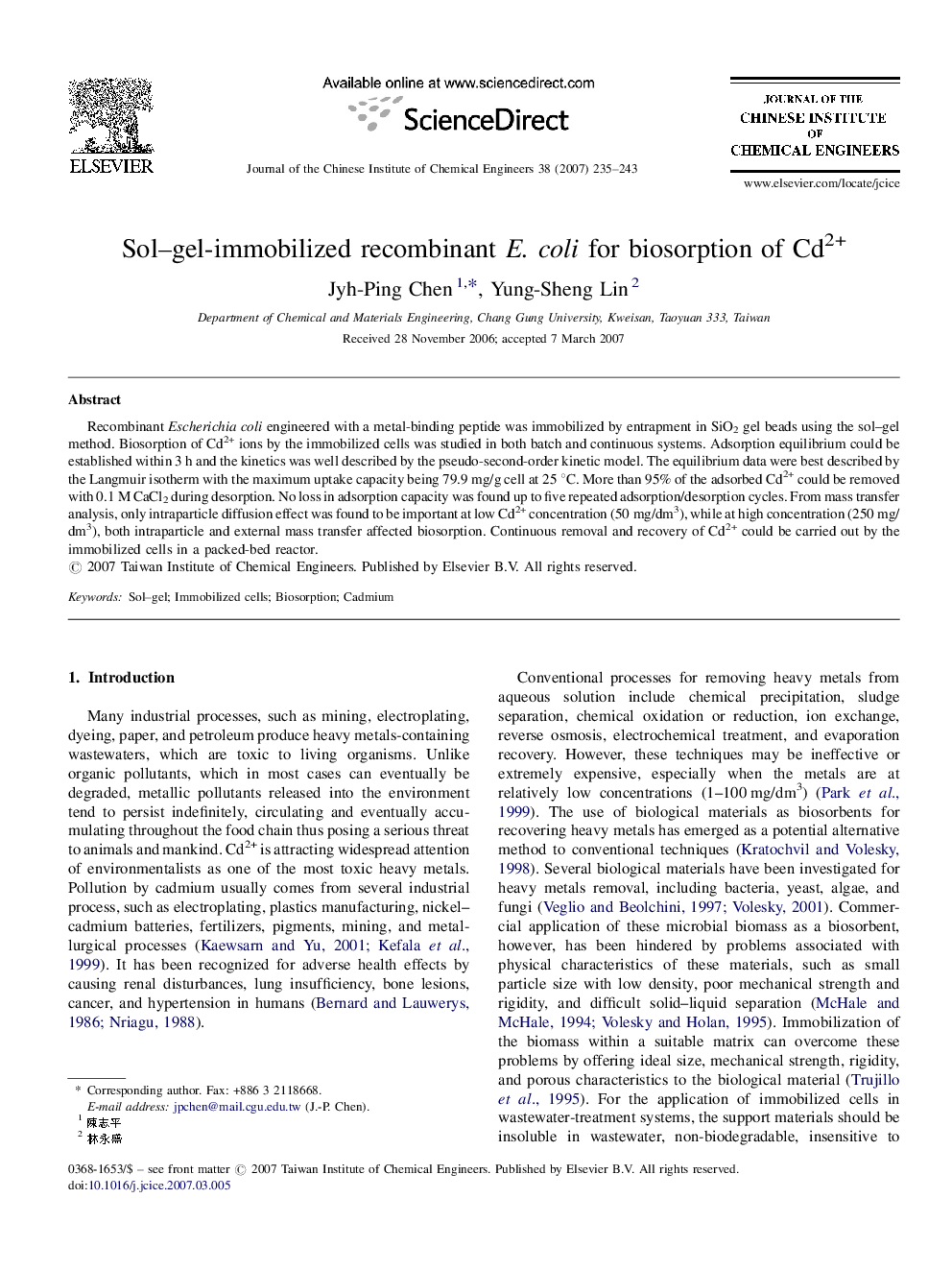| Article ID | Journal | Published Year | Pages | File Type |
|---|---|---|---|---|
| 217705 | Journal of the Chinese Institute of Chemical Engineers | 2007 | 9 Pages |
Recombinant Escherichia coli engineered with a metal-binding peptide was immobilized by entrapment in SiO2 gel beads using the sol–gel method. Biosorption of Cd2+ ions by the immobilized cells was studied in both batch and continuous systems. Adsorption equilibrium could be established within 3 h and the kinetics was well described by the pseudo-second-order kinetic model. The equilibrium data were best described by the Langmuir isotherm with the maximum uptake capacity being 79.9 mg/g cell at 25 °C. More than 95% of the adsorbed Cd2+ could be removed with 0.1 M CaCl2 during desorption. No loss in adsorption capacity was found up to five repeated adsorption/desorption cycles. From mass transfer analysis, only intraparticle diffusion effect was found to be important at low Cd2+ concentration (50 mg/dm3), while at high concentration (250 mg/dm3), both intraparticle and external mass transfer affected biosorption. Continuous removal and recovery of Cd2+ could be carried out by the immobilized cells in a packed-bed reactor.
